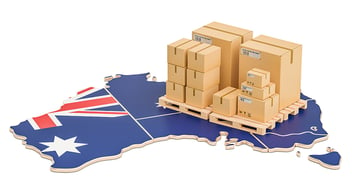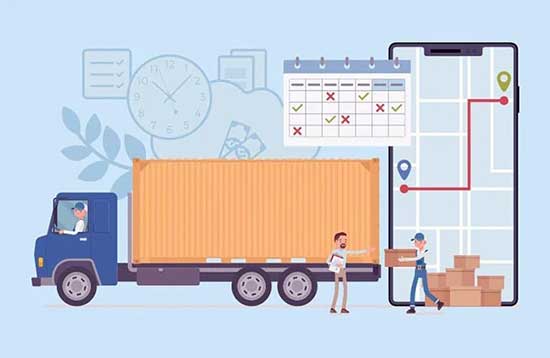
How Can Logistics Benefit From Data Science
Published :

Here’s a fun fact – the word logistics has its roots in an ancient Greek word logos, meaning reason. Some even say it stood for “Practical Arithmetic.” Today, many logistics service providers (LSPs) facilitate a massive flow of goods and in the process create vast informational records. Accountable for millions of shipping every day and millions of information associated with it, the one thing that LSPs require to do is to tap into the valuable insight the data can provide. The practical application of such information can lead to addressing the gaps in logistics operations. That way we are putting the Practical Arithmetic part back into the word.
The logistics industry, until not so long ago, depended on obsolete manual processes with inflexible gadgets and machines, losing out on productivity, profitable opportunities, and customer satisfaction. But that is changing. Advancement in digital technologies, continuously changing customer preferences and the success story of e-commerce make logistics a perfect case study for data science. Combining analytics, relevant statistics, artificial intelligence (AI), and machine learning (ML) to explore the trends and identify patterns will provide a huge push to revolutionize LSP businesses.
A study by the Council of Supply Chain Management Professionals shows that as much as 93% of shippers and 98% of 3PL companies believe that data analytics is critical to making intelligent decisions. Nearly 81% of shippers and 86% of 3PLs surveyed said that using big data and data science effectively will become “a core competency of their supply chain organizations.” Additionally, 71% of them believe that big data improves quality and performance.
All these points only go on to highlight the importance of data in logistics operations. Why don’t we delve a bit into how it can be helpful?
Scope of data science in logistics
Increasing operational efficiency: Ensuring operational standards and eliminating operational inefficiencies are two crucial objectives. Data is a way through which you can track the changes in the operational cycle. With operational data and data science knowledge in hand, tracking and measuring the KPIs like cost, value, services, and waste at regular intervals will help in preventing disasters and taking corrective actions. It will increase efficiency and provide transparency in order to take those actions.
Improving forecasting: With current forecasting methods like simple or multiple regression, time series analysis, etc., where mean absolute percentage error is usually greater than 20%, producing more reliable results from predictive models will require a greater number of variables and analogies to deal with. Data science can help with better forecasting by collecting data in real-time and analyzing data from multiple sources at a greater speed and with higher accuracy.
Route optimization: Route optimization is the process of determining the shortest possible route to reach a location. It helps avoid issues like vehicle routing problem (VRP) that is concerned with an optimal route for a vehicle to deliver the item to the customer. Route optimizing algorithm considers data that include the quantity of ordered goods, geographical distance from pickup and delivery location, frequency of the order, etc. Data science can be employed to track the nearest vehicle and information can be shared without delay. It can also help in identifying trends based on the number of orders, climate, average speed on the route, amount of fuel, and time. Big data also helps in identifying travel behaviors accurately and more comprehensively. Gathering environmental data through the sensors attached to the vehicles will help in identifying pollution, noise levels, traffic details, etc. According to data, route optimization has the potential to reduce Co2 emission by 5%-25%, increase mileage by 5%-15%, reduce the wage bill, and reduce time spent in planning and administration by 25%-75%.
Customer satisfaction: A popular study by Bain & Company says that increasing customer retention by just 5% can result in a 25% increase in profits. For customer retention, it is essential to have information on customer preferences, likes and dislikes which are often available but in a fragmented manner, riddled with unwanted data. Applying data science here can potentially increase customer loyalty, perform explicit customer segmentation and optimize customer service. It also triggers the evolution of CRM techniques. Big data will provide a comprehensive view of customer requirements and service quality that can be used to enhance product quality.
Risk evaluation: It is necessary to track and predict events and processes that can lead to supply chain disruptions. Data science will help in building a resilient transport model by making use of data and intelligently predicting disruptions, and then alerting that to the respective stakeholders.
End-to-end visibility: Data science combined with analytics, information from sensors, real-time monitoring, and 5G technology, will make it easier to provide end-to-end visibility into the entire supply chain operations.
Conclusion
There is no doubt that data science and data analysis will play a larger role in the logistics industry. From tracking compliances, reducing supply chain bottlenecks, to streamlining the supply chain and reducing errors – data has a big role to play in the future. Analytics will optimize operation, routes, and customer satisfaction by providing problem-free resolutions and improving visibility. Logistics is indeed at the cusp of big data transformation. As the popular catchphrase goes these days – data is the electricity of 21st Century. All you have to do is opt for a technology partner who will help you reap the benefits by providing means of harnessing the power of data.

All Rights Reserved. © Copyright 2023. Ramco Systems.